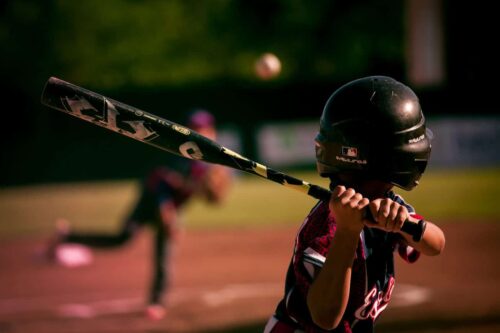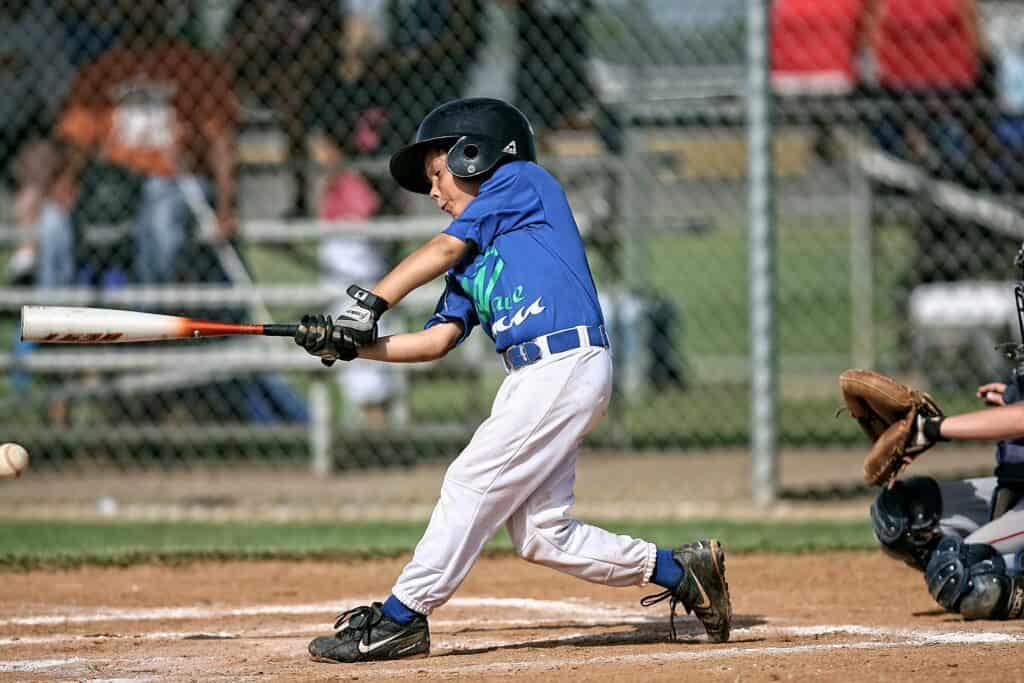Does your child show an interest in baseball or softball? Why not nurture this talent by enrolling them in a local Little League program? Studies show that baseball and softball continue to be popular amongst the youth to date.
In this quick guide, we explore the ins and outs of Little League Baseball and Softball. We aim to give you a head start and a reference manual for the game. Besides, we want to familiarize you with the playing rules and regulations so that your child may have a meaningful experience taking part in your local Little League. Let’s get to it!
About the Little League Baseball and Softball
The Little League Baseball and Softball, also called Little League Inc., is a not-for-profit organization that organizes and promotes youth softball and baseball leagues in all 50 states in the US and 80 other countries. This organization engages volunteers who run various annual Little League programs per the Little League International calendar.
Little League programs target kids aged 4 to 16 years in local schools or sports communities. Here, the children socialize while acquiring life lessons and sportsmanship. They also learn to respect authority, exercise their coordination, and abandon dormant entertainment that leads to such problems as child obesity, poor sleep patterns, aggression, and short attention spans.

Overview of the Little League Divisions
Every local Little League has an active Board of Directors that oversees its operations. In turn, the board groups the boys and girls in various divisions according to their age and skill level as follows: –
-
Tee Ball
The Tee Ball is a coed, entry-level division for male or female players aged between and 7 years. Hence, the board may operate it as a baseball or softball program. Here, the focus is on sparking and growing the child’s interest in the game. In turn, it runs fun programs using simplified rules.
A typical Tee Ball game involves players hitting softer balls off a stationary tee. They strive to score as many runs as possible at the innings. Likewise, the players want to prevent their opponents from scoring while fielding. The team that scores the most runs wins. These straightforward rules ensure that the child is active, fit, and learns vital ball skills and hand to eye coordination. Besides, all players must wear appropriate training shoes, safety helmets, and gloves to prevent injuries.
Tee Ball uses a holistic approach to nurture the kids into playing baseball and softball. It involves parents and legal guardians in all its activities. That way, it creates a safe and welcoming environment for both children and their parents.
Kids play at least one season in the Tee Ball division before advancing to the higher divisions. These are ten weeks of fun and games. More so, the kids practice twice a week and play at least one game on weekends. All kids use age-appropriate balls and bats and a roster size for 7 to 10-year-olds.
-
Minor League
Children aged between 5 years and 11 years may proceed to the Minor League after completing at least a year at the Tee Ball. Here, boys and girls may join the player-pitch (9-10-year-olds), coach-pitch (5-6-year-olds), or machine-pitch (5 – 6-year-olds) division. These age cutoffs are at the discretion of the local board of directors.
The Minor League runs rosters with 12 to 20 players. The players are ranked as per their playing abilities as follows: –
- Rookie League – For newly drafted players
- A-Short Season
- A
- A-Advanced
- AA
- AAA
Newly drafted players start at the Rookie league, playing at least 70 to 80 games per season. They must excel in their current level before being “called up” to the next level. Likewise, a player may be sent back to a lower league if the performance is below par. The AAA is the highest Minor League level. From here, the players proceed to the Major League.
The Minor League hosts tournaments for players aged between 8 to10 years and 9 to 11 years. Here, the players pitch at 46 feet in a 60-foot diamond. Like at the Tee Ball level, the Minor League has parents working hand in hand with volunteer coaches.
-
Little League – Major Division
Local leagues can have only one Major Division. This division accepts boys or girls aged 9 to 12 years. Still, the board may set the entry age limit to 10 or 11 years, depending on their current enrollment in the Minor League division.
As the Minor League, the Major division uses a 60-foot diamond and pitches at 46 feet. Further, it forms its All-Stars tournament teams that practice and may take part in international tournaments. Here, the team players may have a dual roster, allowing them to play in the Major Division and the Intermediate 50/70 division at the same time. Only, the player has to choose one division they want to compete in for that season.
The Major Division international tournaments attract Little League teams from across the world. Here, the Little League International caters to all the team players’ expenses for taking part in the Little League Baseball World Series.
-
Intermediate (50/70)
The Intermediate (50/70) division is a pilot program for 11 to 13-year-olds. Here, the kids horn their skills as they transition from the standard Little League Field size to the Junior or Senior field sizes. In turn, this division uses 70-foot base paths and pitches at 50-foot distances.
The local board allows players to enroll in two rosters while at this division. For, they play at the Intermediate (50/70) and the Major Division in the same season. Only, they will compete in tournaments for one division. If they choose the intermediate division, they may compete in the Intermediate (50/70) Baseball World Series. The Little League International caters to all their expenses for taking part in the global tournament.
-
Junior Division
The Junior Division involves players aged between 12 years and 14 years preparing to compete at the Junior League Baseball World Series. The Junior League Baseball World Series attracts tournament teams from all over the world. Again, the Little League International meets all the expenses for the participating team.
The Junior Division players pitch at a distance of 60 feet, 6 inches at a 90-foot diamond. Still, the board may modify the diamond to cater for a regular season. These players can be in smaller teams determined based on their social rostering or skills assessment. Plus, they play in regulation size fields, regular baseball gloves, and full catching gear.

-
Senior Division
The Senior Division is the final category in the Little League Baseball and Softball. It caters to girls and boys aged 13 to 16 years. These are players who wish to continue their baseball game past the Major Division. In turn, the players use regulation size fields. They practice on weekdays and play games on weekends at a 90-foot diamond and a pitching distance of 60 feet, 6 inches. They form All-Stars teams that compete in the Senior League Baseball World Series. This international tournament is under by Little League International and features teams from all over the world.
Parent/Legal Guardian Participation
Do you want to participate in your child’s journey in the Little League? There are lots of opportunities to do so. See, the board has a team of volunteer coaches working alongside parents or legal guardians. They create the ideal environment for the child to play at home and on the field. It is this inclusivity that facilitates the child’s transition to the higher divisions and competitions. Hence, you can apply to become an umpire, manager, coach, or board member at the local Little League. Here, you will need to fill the Little League volunteer application and then go through mandatory background checks before getting approval.

Teams Selection
Now, every division in the Little League groups its players in elaborate teams. Here, the league categorizes the players according to their ages. Plus, it relies on a rigorous screening process that includes tryouts after the registration stage. The tryouts help to identify and group the players as per their baseball skill levels.
Tee Ball division up to the AAA league have no tryouts. Instead, the coaches vote to come up with the team for the season. In contrast, team selection at the Junior and Senior divisions is via tryouts. These teams will compete at the National League, the International League, and the American League. At the tryout, the managers and coaches evaluate the players running, fielding, throwing, and hitting abilities as follows: –
- Running
Players take part in short sprints to gauge their speed at the field.
- Throwing & Fielding
Here, each player fields at least 9 to 11 grounders thrown at specified bases. The player must demonstrate their prowess in tracking the ball, arm strength, and overall form.
- Hitting
Each player has to hit at least 15 balls. The batting speed and swing will determine their final score.
Next, an average tryout score for each child is determined. This score will be part of the draft structure, player rankings, and creating a balanced group. Each division will have a few or more teams depending on the number of children who register, their age, and current skill level.
Little League Baseball Field Dimensions
The Little League Baseball Field is a regulated playing area for youth baseball teams. It has precise dimensions that adhere to the Little League field specification guidelines. That way, the baseball field is a safe, fun, and functional ground for all participants.
Then, when setting up your local baseball diamond, the managers consider: –
- The number of divisions that will use it
- The players’ age groups and;
- The Little League field specification guidelines
Hence, a baseball diamond for two or more divisions should be adjustable to fit each group precisely. And, the Little League field specification guidelines require that: –
- The distance between the back fence and point or apex at the home plate is at least 200 feet for fields used by Intermediate (50/70) division or below. The Junior and Senior Leagues use grounds that extend to 300 feet.
- The fence should be at least 4 feet high.
- The base path should be at least 60 feet for players aged 12 years and below. Older players use a base path of up to 90 feet.
- The distance between the home plate apex and the backstop varies depending on the base distance as follows: –

| Base Distance | Backstop Position |
|---|---|
| 50-foot field | 20 feet |
| 60-foot field | 20 feet |
| 70-foot field | 30 to 40 feet |
| 80-foot field | 30 to 40 feet |
| 90-foot field | 60 feet |
-
The infield parameter should be 50 feet for a 50- to 60-foot field, 65-to 80 feet for and 70-to 80-foot field, and 95 feet for a 90-foot field.

Little League Baseball Field Size
The Little League Baseball Field Size has three key parameters as follows: –
- The Pitching Distance
The pitching distance is a reflection of the reaction time of the hitter. Hence, the least pitching distance is 46 feet for the Tee Ball division. Kids at this division will be able to throw the ball and hit the ball with ease. It increases up to 60 feet 6 inches at the Major League division. At this highest level, the kids are hitting the ball much harder. Besides, the hitter is alert and responsive to the oncoming ball.
- Base Paths
Players in the Tee Ball division are yet to master their speed and ball control. Hence they use 60-foot base paths. At this distance, the infielders can throw the ball from one base to the next. The base path increases to 70 feet, 80 feet, then 90 feet at the senior division.
- Home Run Fence
Erecting a fence for the home run is quite expensive, more so when starting the league. Hence, most local Little Leagues resort to a home run fence of about 200 feet. At this length, the kids will be able to go round the field, defend, and find it convenient to hit the ball. As the teams progress to upper divisions and start taking part in national and international tournaments, this home run fence increases to 250 feet and 300 feet. Ultimately, the home run fence should measure 400 feet to match a professional baseball field.
Below is a summary of the standard Little League Baseball Field Size: –
| Parameter | Dimension |
|---|---|
| Home Run Fence | 200 feet |
| Base Paths | 60 feet |
| Pitching rubber to Infield Arc Radius | 50 feet |
| Infield Hypotenuse | 84 feet |
| Distance of Pitching Rubber | 46 feet |
| Center Mound Distance | 45 feet |
| Mound Radius | 5 feet |
| Radius of Home Plate | 10 feet |
| Radius of Base Cutout | 9 feet |
| Baseline Width | 4 feet |
| To Backstop Distance | 25 feet |
| Coaches Box | 8 feet x 4 feet |

| |
Little League Baseball Bat Size Chart
The Little League players use baseball bats to hit the ball. These bats vary in terms of models and sizes. That is, the baseball bats for kids and youths have a smaller barrel and weight much lighter. It is a convenient size for a solid grip and swing for the young player. In contrast, baseball bats for adult players have sizeable barrels. Next, the bats use such materials as aluminum and wood. These materials offer the right weight and do not break easily. Plus, their price range is affordable, making them ideal for training.
With this in mind, the Little League provides a baseball bat sizing chart as a guideline on picking the right baseball bat for your play. This bat length is the distance from the end cap to the knob. A longer bat has a far reach, allowing the kids to hit balls outside the plate. But, if it is too long, it will slow down the player. They will miss their catches and hits inside the pitches.
Then, the ideal length should be: –
- Sufficient to accommodate the striking zone
- Lightweight to allow for a comfortable swing
- Adequate weight to generate ample hitting power
- Permitted by the local league
The Little League requires the baseball bats used in the Little League Major Division and below to meet the following regulations: –
- Not more than 33 inches long
- Not more than 2 5/8 inches in diameter
- If wooden, not less than 15/16 inches in diameter at its narrowest part
- Not exceed 16 inches if wooden with a fitted or tapped sleeve
Now, today’s baseball bat incorporates lots of features to cater to the mass market. You know, each brand uses a different material, technology, barrel specs, sanctioning, and drops. Hence, shopping for the right bat size can prove challenging. For this, manufacturers rely on a standard sizing chart for the Little League Baseball.
| Age | Bat Length |
|---|---|
| 5 – 7 years | 24” – 26” |
| 8 – 9 years | 26” – 28” |
| 10 years | 20$ |
| 11 – 12 years | 30” – 31” |
| 13 – 14 years | 31” – 32” |
| 15 – 16 years | 32” – 33” |
| 17+ years | 33” – 34” |

Weight in lbs
Height
| 3′-3’3″ | 3’4″-3’9″ | 4′ | 4’1″-4’3 | 4’4″-4’7″ | 4’8″-5′ | 5’1″-5’3″ | 5’4″-5’7″ | 5’8″-6′ | 6’1″ & above | |
|---|---|---|---|---|---|---|---|---|---|---|
| Under 60 | 26″ | 27″ | 28″ | 29″ | 29″ | 30″ | | | | |
| 61-70 | 27″ | 27″ | 28″ | 29″ | 30″ | 30″ | ||||
| 71-80 | 28″ | 28″ | 29″ | 30″ | 30″ | 31″ | ||||
| 81 – 90 | 28″ | 29″ | 29″ | 30″ | 30″ | 31″ | 32″ | |||
| 91 – 100 | 28″ | 29″ | 30″ | 30″ | 31″ | 31″ | 32″ | |||
| 101 – 110 | 29″ | 29″ | 30″ | 30″ | 31″ | 31″ | 32″ | |||
| 111 – 120 | 29″ | 29″ | 30″ | 30″ | 31″ | 31″ | 32″ | |||
| 121 – 130 | 29″ | 30″ | 30″ | 30″ | 31″ | 32″ | 33″ | 33″ | ||
| 131 – 140 | 29″ | 30″ | 30″ | 31″ | 31″ | 32″ | 33″ | 33″ | ||
| 141 – 150 | 30″ | 30″ | 31″ | 31″ | 32″ | 33″ | 33″ | |||
| 151 – 160 | 30″ | 31″ | 31″ | 32″ | 32″ | 33″ | 33″ | 33″ | ||
| 161 – 170 | 31″ | 31″ | 32″ | 32″ | 33″ | 33″ | 34″ | |||
| 171 – 180 | 32″ | 33″ | 33″ | 34″ | 34″ | |||||
| Over 180 | 33″ | 33″ | 34″ | 34″ |
Little League Baseball Bat Rules

Little League Baseball Bat Rules
Below is a summary of the Little League Baseball Bat Rules: –
- All baseball bats used in the Little League must meet the USA Baseball Bat Standard (USABat)
- Tee Ball bats should include the USA Baseball mark and accompanying text “ONLY FOR USE WITH APPROVED TEE BALLS”.
- Baseball bats used in the Minor or Major divisions should be 33 inches long at most and 2 5/8 inches diameter. If wooden, these bats should be 15/16 inches in diameter at most.
- Senior division baseball bates should be 36 inches long at most and 2 5/8 inches in diameter. If wooden, the bats should not exceed 15/16 inches in diameter.
- Baseball bats used in the Little League Challenger division should not exceed 33 inches in length or be more than 2 5/8 inches in diameter. If wooden, they should not exceed 15/16 inches in diameter.
- The Senior League Challenger Division shall use baseball bats whose length does not exceed 36 inches and a diameter not exceeding 2 5/8 inches. If wooden, this diameter should not exceed 15/16 inches.
- Softball bats should not exceed 33 inches when used in the Junior League division or 34 inches when used in the Senior League division. Their diameter should not exceed 2¼ inches.

FAQs
Q. How Big Is a Little League Baseball Field?
A. The standard Little League field varies depending on the league division and the age group of the players. It has a pitching distance of 46 feet and 60-foot base paths. Further, the outfield fence should be between 200 feet and 275 feet from the home plate. If you have players aged between 11 years and 12 years, you will need a pitching distance of 50 feet and a 70-foot base path. Hence, the players move to the players to the intermediate (50/70) division.
Q. What Are The Age Groups For Little League Softball?
A. The Little League Softball, also known as the Major Division in softball, caters to kids between 9 to 12 years. Still, the local Little League Softball may push this limit to start at ten years or 11 years. This variation depends on the current enrollment of players and their skill levels.
Q. Can Girls Play In Little League Baseball?
A. Yes. Since 1973 when Sylvia Pressler passed a ruling in favor of the New Jersey Civil Rights Division, millions of girls have participated in the Little League Baseball programs.
Q. How Long Is A Little League Baseball Game?
A. Six innings or 2 hours.
Q. When Does Little League Baseball Season Start?
A. The Little League baseball season begins in March. At this time, the local teams have indoor practice until April, when they move to the outdoor facilities. This season breaks for one week during the Easter holidays, and then continues until the end of June. Still, there are instances when the league season extends to the end of July. This extended season is popular with the upper divisions. Moreover, the Minor and Major Leagues may form their All-Star teams in May and train up to August.
Conclusion
The above guide for Little League Baseball and Softball touches on the fundamental aspects of the game. Each month, the Little League publishes updates, reminders, and useful information for parents, coaches, and players to keep abreast of the changing playing environment. Hence, it is vital to check with your local league for any announcements that may affect you or your child. Resources on grant opportunities, guidelines on best practices, Fun Days calendars, child protection, and tips to extend the training to your backyard are a must-have.














I support sports in adults, especially children. It’s important to focus them on the right values and respect for them from a young age. I’m sure with a good coach, and every sport has a positive effect on people. It’s great that Little League International takes care of all the costs. It’s making the players and their parents more relieved and able to enjoy the sport even more. I wish you many successes in your work!
Hello, Jas, and thank you.
Thank you for your kind words.
Don’t hesitate to contact me if I can help you with anything else or if you have any questions.
As we all know, sports are important for the mind and body development of children. Children need to get into the sport at a young age. This way, they stay fit and healthy. Also, they learn teamwork and make friends. Parents need to understand the importance of sport to their children fully. I am afraid there are many children away from sports because their parents just don’t care.
Hello, Nektarios, and thank you.
Thank you for your kind words.
Yes, support from parents and friends is helpful. That is part of this article’s idea to help parents understand and know about the rules and idealogy in the Little League of both Baseball and Softball.
Don’t hesitate to contact me if I can help you with anything else or if you have any questions.
This is the first article that I came across where everything was explained in so much detail. It is certainly easy to follow everything this way, and I liked how I could understand most of the part so that I can help out my kids when they want to enroll in softball.
Hello, Shrey, and thank you.
Thank you for your kind words.
Great to hear about your benefit of the article too.
I think that this article could be useful for you too. It is about what to have in mind about the baseball gloves for the youth.
Don’t hesitate to contact me if I can help you with anything else or if you have any questions.
I have already run into your website before for my random sports searches. And I must admit that I am never disappointed with what I find on your website. My little siblings actually play baseball. Both of them do. And this article really applies to them in a way, and I really appreciate that. I will actually be sharing this with my mom because I’m sure she will find great interest in this article, just like I did.
Hello, Misael H, and thank you.
Thank you for your kind words.
I believe that she would like this article too.
Great to hear about your benefit of the article too.
Don’t hesitate to contact me if I can help you with anything else or if you have any questions.
Hi, I’ve just gone through your article about the guide for little league baseball and softball. I find your article very interesting and helpful more especially to the youth. I agree with you that baseball and softball continue to be popular amongst the youth in many countries, as you clearly stated. But thank you so much for sharing this useful information with us. I never knew that children could start baseball and softball at the age of 4. I promise to share this amazing information with my colleagues too.
Hello, Kokontala, and thank you.
Thank you for your kind words.
I believe that you would like this article too.
Great to hear about your benefit of the article too.
Don’t hesitate to contact me if I can help you with anything else or if you have any questions.